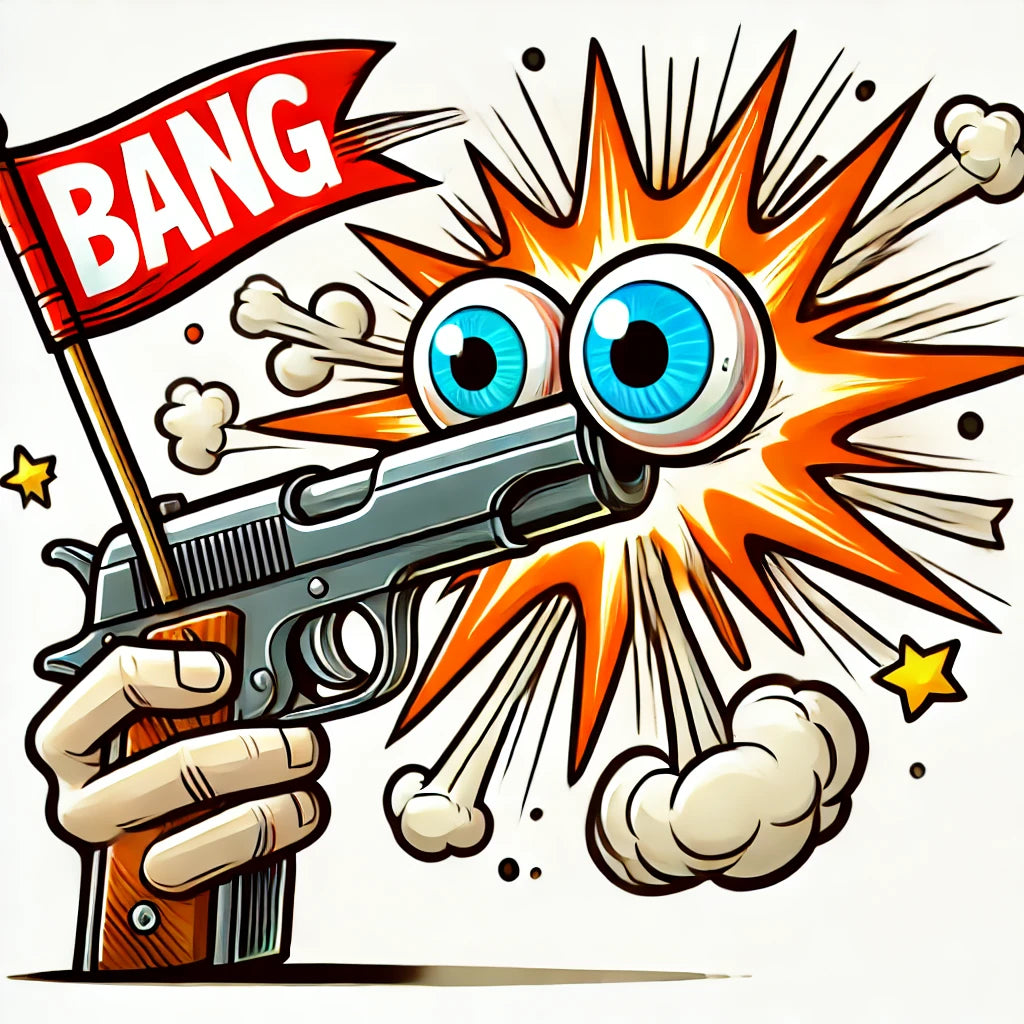In the realm of firearms and ammunition, safety is paramount. One of the critical aspects of safety involves understanding and addressing malfunctions that can occur. One such malfunction, known as a squib load, poses significant risks if not properly handled. At Mountain West Lethal Precision, we prioritize educating our customers about these potential hazards to ensure their safety and the longevity of their firearms.
What is a Squib Load?
A squib load, also referred to as a squib round, occurs when a bullet is fired but fails to exit the barrel of the firearm. This malfunction is typically due to insufficient propellant (gunpowder) in the cartridge, leading to inadequate force to propel the bullet completely through and out of the barrel. Consequently, the bullet becomes lodged within the barrel, creating a dangerous obstruction.
What Happens During a Squib Load?
When a squib load occurs, the immediate and most noticeable sign is a significantly quieter “pop” or “poof” sound compared to the usual loud bang of a regular discharge. This sound indicates that the round did not fire correctly. Additionally, the recoil will be noticeably less or even nonexistent. Ignoring these signs and continuing to fire can result in catastrophic damage to the firearm and potential injury to the shooter.
Potential Causes of a Squib Load
1. Insufficient Powder Charge: The most common cause of a squib load is an undercharged cartridge. If the cartridge does not contain enough powder, the bullet will not achieve the necessary velocity to exit the barrel.
2. Primer-Only Ignition: In some cases, the primer alone may ignite without the powder. This can generate enough force to push the bullet partially into the barrel but not enough to expel it fully.
3. Contaminated Powder: Moisture or other contaminants can affect the performance of the gunpowder, reducing its effectiveness and leading to a squib load.
What to Do if You Suspect a Squib Load
1. Stop Firing Immediately: Upon recognizing the signs of a squib load, cease firing immediately. Continuing to fire can cause severe damage as subsequent rounds may collide with the obstructed bullet, leading to barrel rupture or worse.
2. Clear the Firearm: Safely unload and clear the firearm. Ensure that the chamber is empty and the magazine is removed. Disassembling the firearm might be necessary to thoroughly inspect the barrel.
3. Inspect the Barrel: Use a cleaning rod or similar tool to inspect the barrel for any obstructions. If you find a lodged bullet, carefully push it out from the breech end (the end closest to the chamber) using a properly sized rod.
4. Seek Professional Help: If you are uncertain about how to clear the obstruction or if you encounter resistance, seek assistance from a qualified gunsmith. Attempting to clear a squib load without proper knowledge and tools can cause further damage.
Preventing Squib Loads
1. Quality Control: Ensure that all ammunition is of high quality. At Mountain West Lethal Precision, we prioritize meticulous quality control to minimize the risk of squib loads.
2. Proper Storage: Store ammunition in a cool, dry place to prevent contamination and degradation of the gunpowder.
3. Regular Maintenance: Regularly clean and maintain your firearms to ensure they function correctly. A well-maintained firearm is less likely to experience malfunctions.
Conclusion
Understanding squib loads and knowing how to address them is crucial for any responsible firearm owner. At Mountain West Lethal Precision, we are committed to providing not only top-quality ammunition but also the necessary knowledge to keep our customers safe. Remember, safety is always the top priority. Stay vigilant, and if you ever encounter a squib load, take immediate action to ensure your safety and the safety of those around you.
For more information and to browse our range of high-quality ammunition, visit www.mwlp.com. Stay safe and shoot responsibly!
Understanding Squib Loads: What They Are and What to Do About Them







